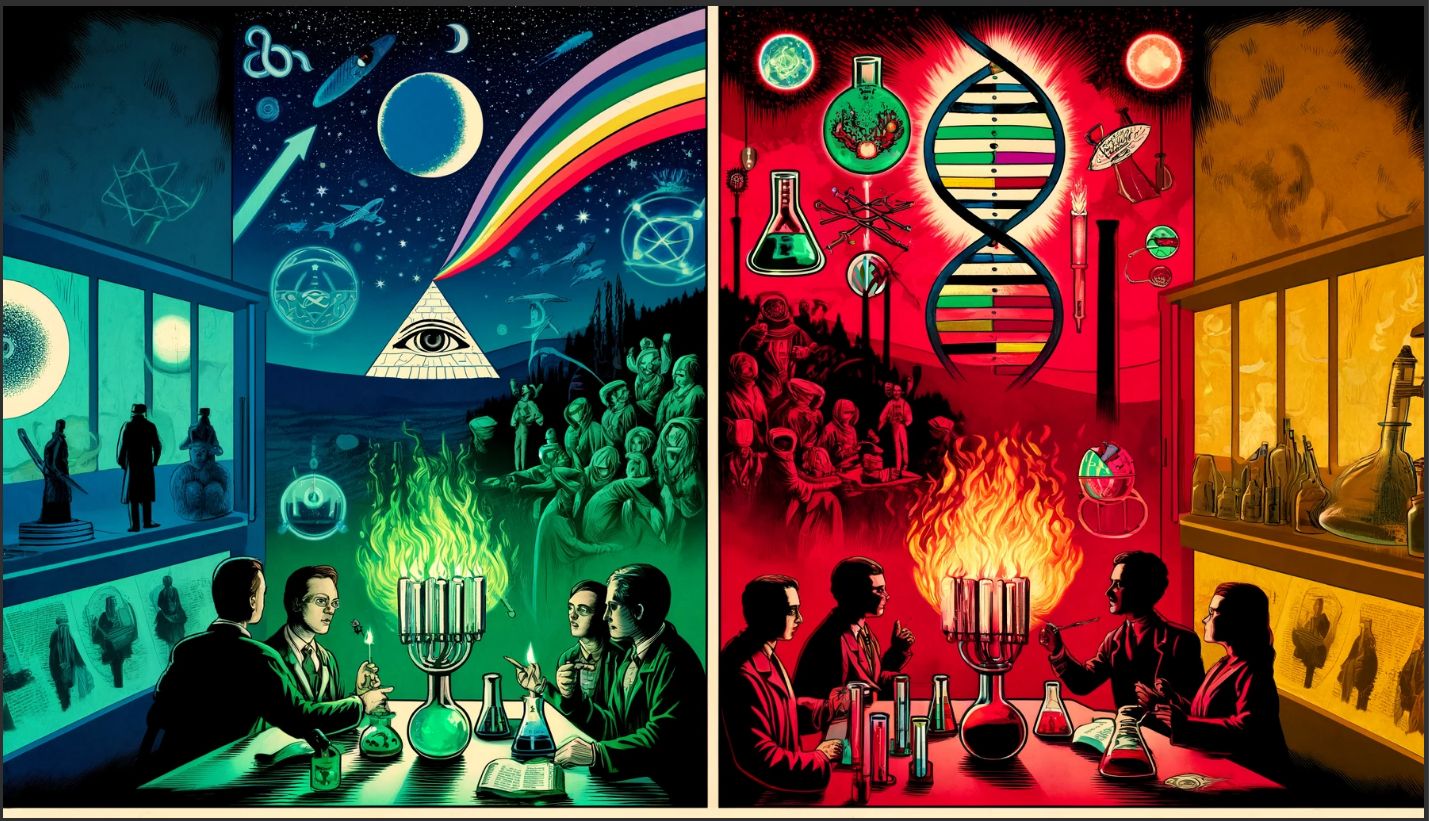The persistent concept of ‘shared fathership’
Telegony shared paternity
Telegony is an ancient biological theory (and persistent belief) suggesting that offspring can inherit characteristics from a female’s previous mate(s), rather than solely from the genetic material of the parents. The term originates from Greek mythology, where Telegonus was the son of Odysseus and the enchantress Circe, yet his traits were influenced by Odysseus’ earlier adventures. The idea persisted into the 19th century, with the belief that a female’s first mate could affect the characteristics of her later offspring with different partners. Modern genetics claims to have disproven telegony, establishing that offspring inherit genes exclusively from their direct parents.
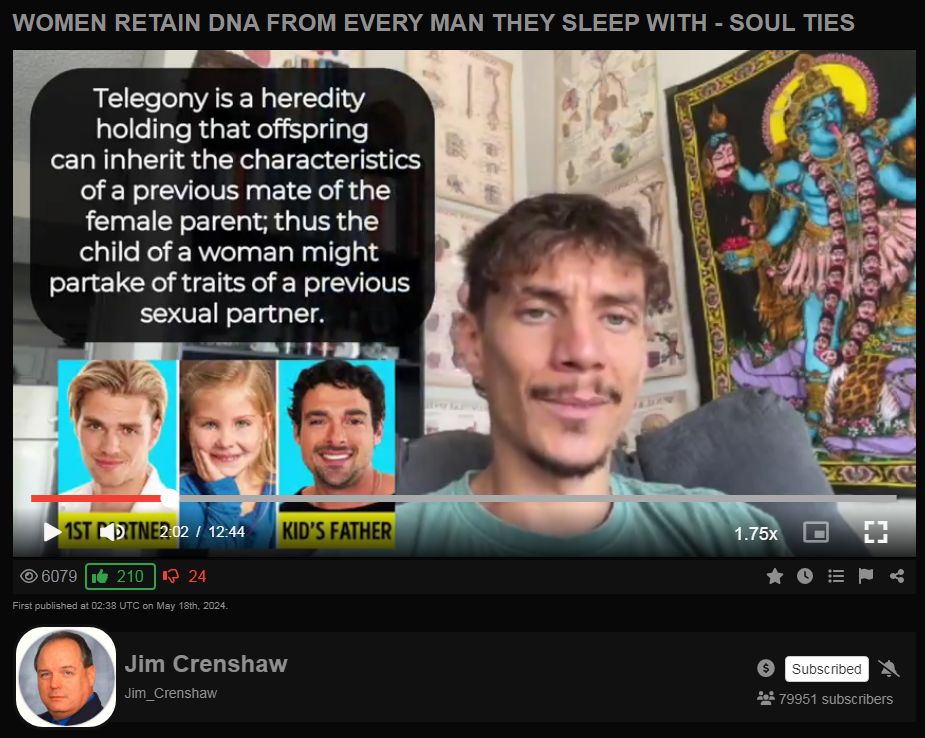
TELEGONY is a heredity holding that offspring can inherit the characteristics of a previous mate of the female parent; thus the child of a woman might partake of traits of a previous sexual partner.
“A woman is designed to be like sponges for genetic material from their partners.”
Paternity can be shared.
Lord Morton’s Mane – horse + zebra breeding.
The theory contends that: A woman who has been with one man for her entire breeding life, all her children will look alike. A woman who has had multiple sexual partners, each child will favor her looks but each will more often look different from the father because the paternity is shared. Reality often bears this out.
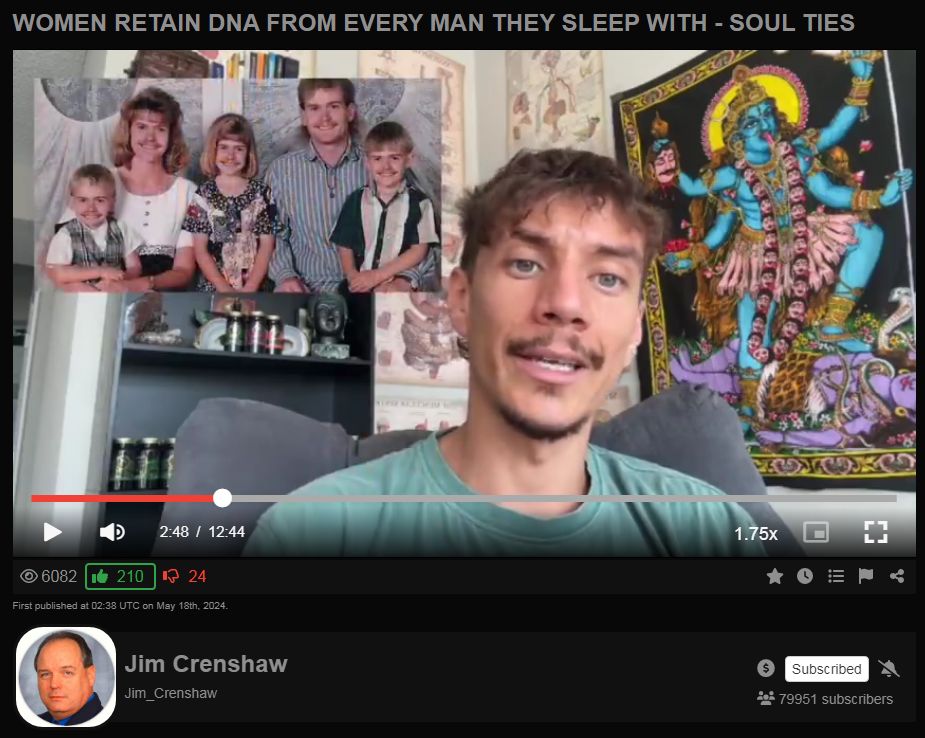
microchimerism as DNA holding mechanism
Interesting practice of the local / tribal / manor Lord having initial sex with women who are then wed to other males in that tribe / village.
See also Jordan Maxwell’s explorations and explanations of words and spellings as spells.
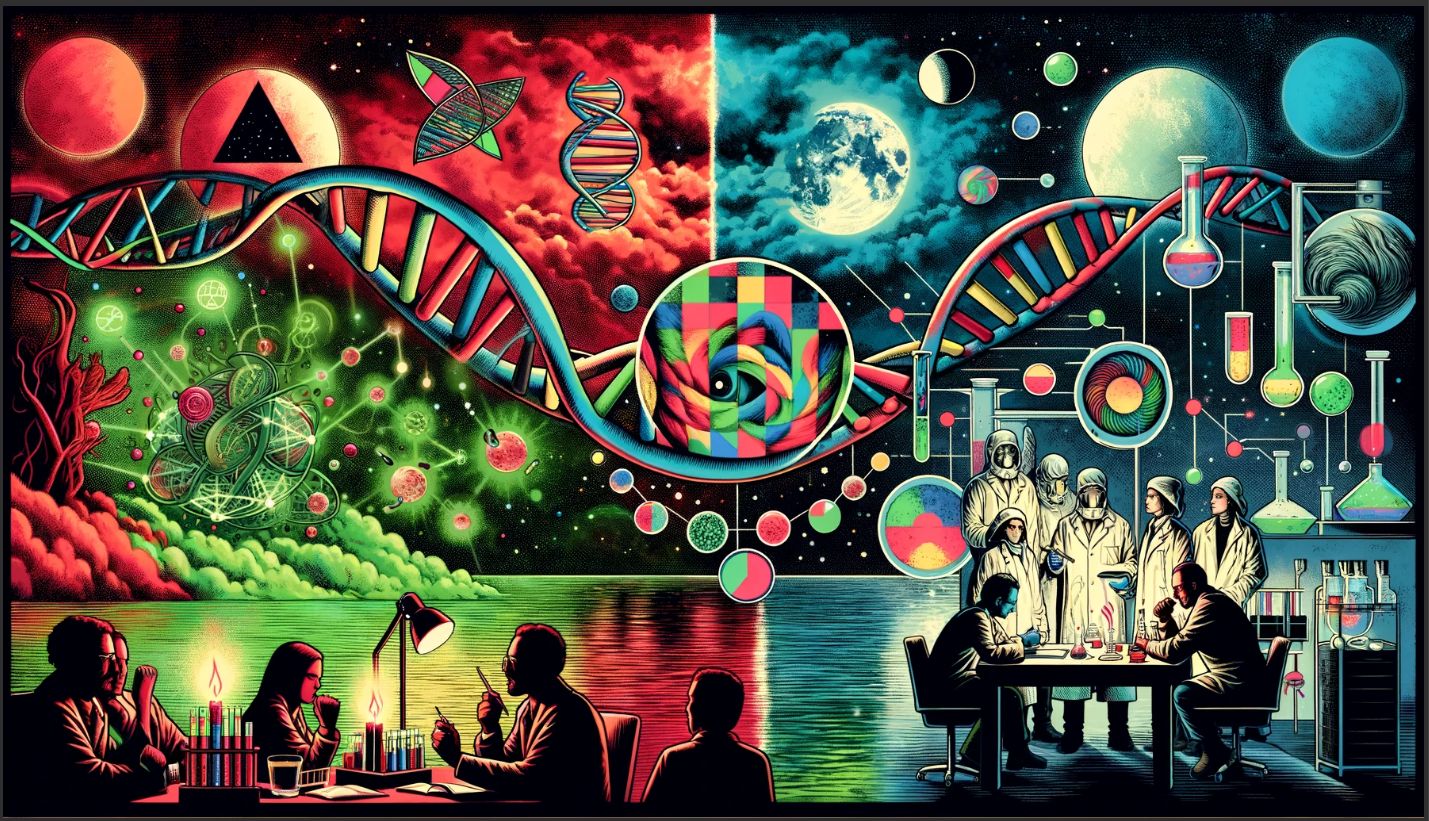
The Theory of Telegony: Ancient Beliefs and Modern Interpretations
The concept of telegony, an ancient and controversial theory, suggests that a woman retains the DNA of her past sexual partners, potentially affecting the genetic makeup of her future offspring. This theory, though largely discredited by modern science, offers a fascinating lens through which to explore historical and cultural practices, particularly those involving notions of paternity, inheritance, and social stability.
Historical Context: Tribal and Feudal Practices
In many tribal and feudal societies, the notion of paternity was intertwined with social hierarchy and power. One notable practice was that of the local chieftain or lord exercising the right of the first night (jus primae noctis), where he would have sexual relations with a bride before she was wed to another man. This practice, rooted in the belief of telegony, suggested that the noble’s superior traits could be imparted to the offspring, regardless of the biological father’s identity.
This form of “shared paternity” was believed to ensure genetic diversity and social cohesion within the tribe or community. By having the chieftain’s influence present in the genetic pool, it was thought that the resulting children would inherit a blend of desirable traits, thereby strengthening the tribe’s future generations.
Shared Paternity: Ensuring Diversity
The concept of shared paternity through telegony provided a framework for maintaining genetic diversity without the need for polyandry (one woman having multiple husbands). Instead, women could have multiple partners at different times, with each partner potentially contributing to the genetic makeup of her offspring. This approach theoretically combined the benefits of genetic diversity with the stability of monogamous relationships for child-rearing purposes.
The Psychological and Epigenetic Implications
One intriguing aspect of telegony is the idea that a woman’s exposure to multiple partners’ DNA might influence her physiology and psychology. The notion posits that retained DNA fragments from different men could lead to a “mutt” personality, characterized by conflicting signals and behaviors. This could manifest as increased emotional variability, complex personality traits, or even what might be perceived as “craziness” due to the interplay of different epigenetic and chemical influences.
Epigenetics, the study of how behaviors and environment can cause changes that affect the way genes work, provides a modern scientific angle to explore these ideas. While telegony itself lacks empirical support, the concept that a woman’s reproductive history could influence her biology and psychology is not entirely far-fetched. Factors such as hormonal changes, psychological impacts, and even microbiome alterations through intimate contact could play roles in shaping an individual’s traits and behaviors.
The Dual Nature of Telegony: Benefits and Drawbacks
The theory of telegony, if considered from a purely speculative standpoint, presents both potential benefits and drawbacks:
**Potential Benefits:**
1. **Genetic Diversity:** Promotes a wider gene pool, potentially leading to healthier and more adaptable offspring.
2. **Social Cohesion:** Reinforces social structures by intertwining the lineage of the ruling class with that of the common people.
3. **Inheritance of Desirable Traits:** Theoretically allows the passing of superior traits from high-status individuals to future generations.
**Potential Drawbacks:**
1. **Psychological Stress:** The retention of multiple partners’ DNA could lead to conflicting biological signals, potentially causing mental health issues.
2. **Social Control:** Practices like jus primae noctis could be used to exert power and control over women, leading to social and gender inequalities.
3. **Genetic Uncertainty:** The lack of clear paternity could complicate inheritance and familial relationships, leading to potential conflicts and instability.
Modern Society and Sexuality
Contrasting ancient practices with modern society, the notion of telegony might be seen as a reflection of sexual degeneracy or liberation, depending on one’s perspective. In contemporary times, sexual behavior is often more fluid and diverse, with fewer societal constraints on relationships and reproduction. However, the underlying concerns about genetic heritage, social stability, and the psychological impacts of multiple partners remain relevant.
Modern genetics has debunked telegony as a scientific concept, yet the cultural and psychological dimensions of sexual history continue to be explored. Understanding the balance between genetic diversity, social cohesion, and individual well-being remains a complex and ongoing endeavor in the study of human behavior and society.
In conclusion, while telegony as a theory may be rooted in myth and speculation, it provides a fascinating framework to explore historical practices and their implications for genetic and social dynamics. By examining the benefits and drawbacks of such theories, we can gain insights into the interplay between biology, culture, and individual experience, both in ancient times and in our contemporary world.
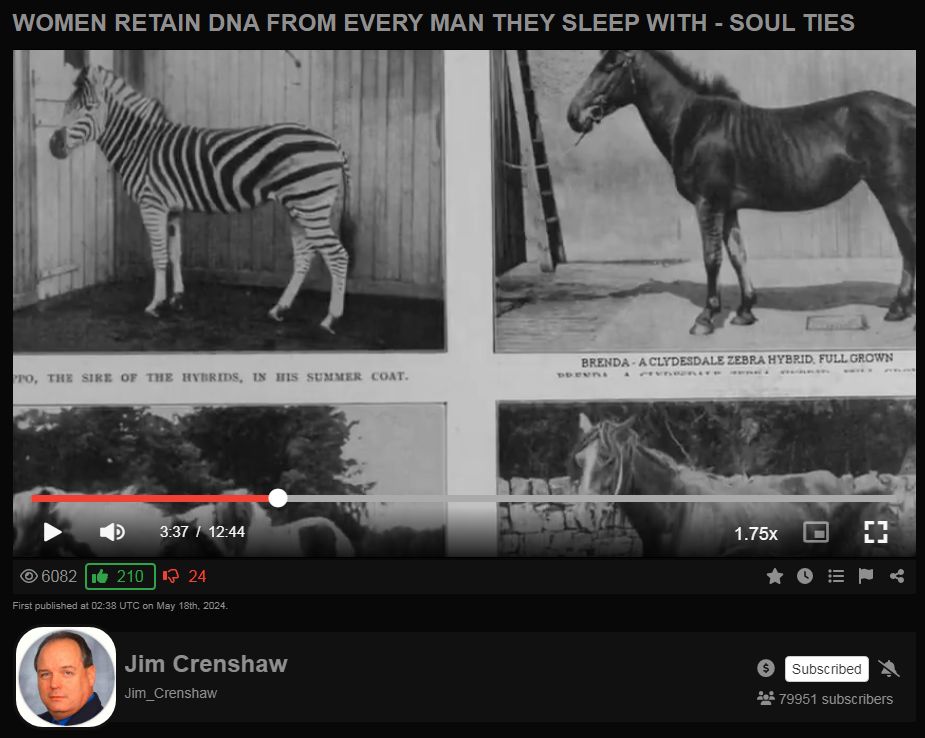
Studies claiming to disprove Telegony
Several key studies and advancements in genetics have collectively disproven telegony. These include:
1. **Gregor Mendel’s Experiments (1865)**: Mendel’s work with pea plants established the principles of inheritance, demonstrating that traits are passed down through discrete units (genes) from parents to offspring, with no influence from previous mates.
2. **August Weismann’s Germ Plasm Theory (1883)**: Weismann proposed that inheritance is carried by germ cells (sperm and egg), not by somatic cells (body cells). This theory suggested that environmental influences and previous mates could not alter the genetic material passed to offspring.
3. **Thomas Hunt Morgan’s Drosophila Research (1910s)**: Morgan’s experiments with fruit flies provided further evidence for the chromosomal theory of inheritance, showing that genes are located on chromosomes and are inherited according to specific patterns, unaffected by prior mating.
4. **Modern Molecular Genetics (1950s onwards)**: The discovery of the structure of DNA by Watson and Crick, along with subsequent developments in molecular biology, provided a clear understanding of how genetic information is transmitted. This body of work confirmed that offspring inherit a combination of genes from both parents, without influence from previous mates. (And yet the issue remains of sometimes radically-differing features amongst offspring from a woman who had more than one male partner.)
Collectively, these studies and the development of modern genetics have thoroughly disproven the theory of telegony.
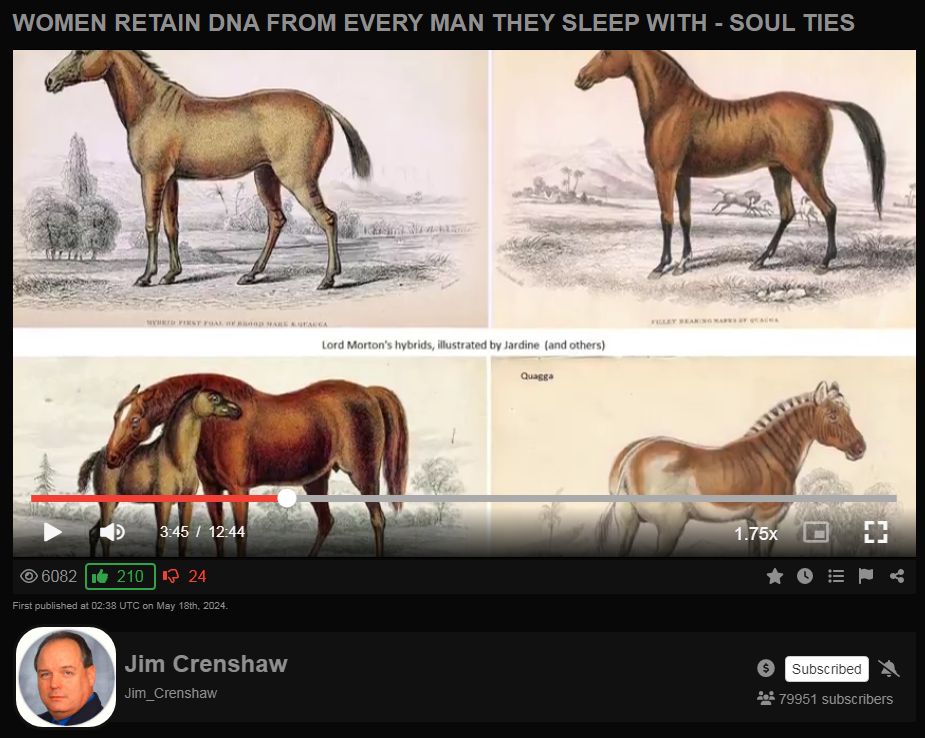
Studies claiming to prove Telegony
The theory of telegony gained some historical support through specific observations and experiments, most notably:
1. **Lord Morton’s Mare (1820s)**: One of the most famous anecdotes used to support telegony involved Lord Morton’s experiment. He bred a mare with a quagga (an extinct zebra-like animal) and produced a hybrid foal. Later, when the same mare was bred with a horse, the subsequent offspring exhibited zebra-like stripes, which Morton interpreted as evidence of telegony.
2. **Alexander von Humboldt’s Observations (1800s)**: The naturalist Alexander von Humboldt reported similar cases in various animal species, where offspring displayed traits of a previous mate, although these observations were anecdotal and lacked rigorous scientific methodology.
3. **F. Illingworth’s Study (1911)**: Entomologist J.F. Illingworth conducted experiments with silkworms, claiming that the first mating of a female could influence the characteristics of offspring from subsequent matings. This study was later criticized and its findings were not replicated by other researchers.
4. **Ewart’s Horse-Zebra Crossbreeding (1899)**: James Cossar Ewart conducted crossbreeding experiments similar to Lord Morton’s, but his findings did not consistently support telegony. Ewart’s work was crucial in demonstrating that previous mate influence was not a reliable phenomenon and highlighted the need for controlled scientific methods.
While these studies and observations initially seemed to support telegony, they were later discredited by advances in genetics and the understanding of heredity. Modern genetics has shown that offspring inherit genetic material exclusively from their direct parents, without influence from previous mates.
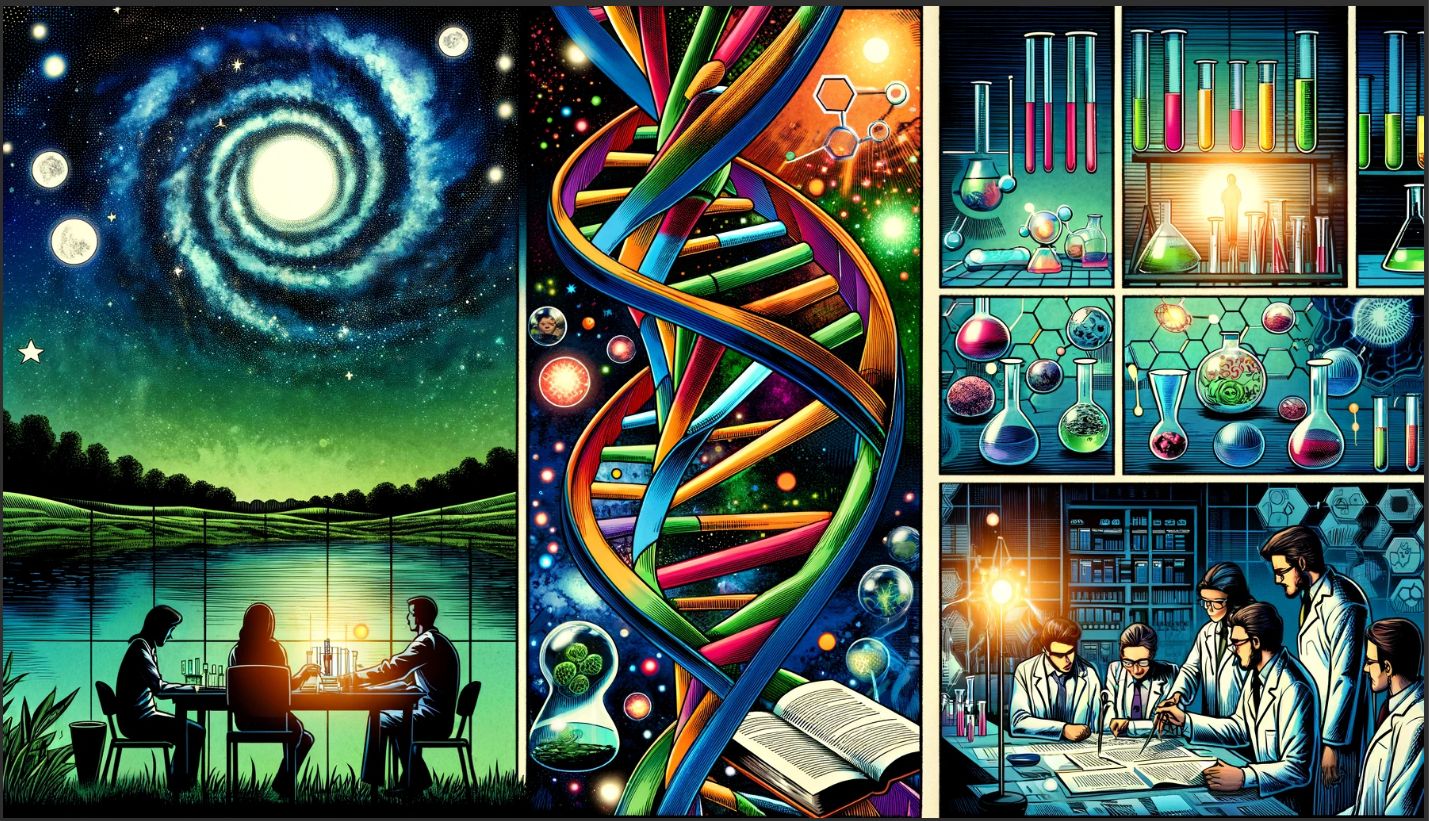
See also movie GATTACA which is about eugenics, racial hygeine, birthright, epigenetics and the controlled, directed future of humankind.
GATTACA: A Cinematic Exploration of Eugenics and the Future of Humankind
**GATTACA**, a 1997 science fiction film directed by Andrew Niccol, presents a chilling vision of a future where genetic engineering and eugenics shape the destiny of humanity. The film delves into themes of genetic determinism, racial hygiene, birthright, and the ethical implications of a society driven by genetic perfection. Through its narrative, GATTACA raises profound questions about the nature of human potential and the societal impact of genetic manipulation.
The World of GATTACA: A Society Defined by Genetics
In the world of GATTACA, genetic engineering is the norm, and individuals’ worth and social status are determined by their genetic makeup. At birth, people’s DNA is analyzed to predict their life expectancy, physical capabilities, and susceptibility to diseases. This information dictates their career prospects, social interactions, and overall potential in life.
The protagonist, Vincent Freeman, is a “natural-born” individual, conceived without genetic selection. As a result, he is deemed inferior and relegated to menial jobs despite his ambition to become an astronaut. Vincent’s struggle to transcend his genetic limitations forms the crux of the film, highlighting the inherent flaws and ethical dilemmas of a society obsessed with genetic perfection.
Eugenics and Racial Hygiene: The Quest for Genetic Purity
GATTACA explores the concept of eugenics, the practice of selecting and breeding for desirable genetic traits. This echoes historical attempts at racial hygiene, where certain traits were favored to create an idealized human race. In the film, parents choose the genetic makeup of their children, ensuring they have the best possible start in life. This selective breeding creates a genetic elite, leading to a rigid class system based on genetic purity.
The film critiques this pursuit of genetic perfection by showcasing the discrimination and social stratification it fosters. Those with “inferior” genetics, like Vincent, are marginalized and denied opportunities, regardless of their abilities or aspirations. This reflects the real-world consequences of eugenics, where the emphasis on genetic superiority can lead to social inequality and prejudice.
Birthright and Human Potential: Beyond Genetic Determinism
GATTACA challenges the notion that genetics alone define an individual’s potential. Vincent’s journey is a testament to the power of human spirit, determination, and resilience. Despite his genetic shortcomings, he uses ingenuity, hard work, and deception to infiltrate the elite GATTACA Corporation and pursue his dream of space travel.
The film underscores the limitations of genetic determinism, suggesting that human potential cannot be fully measured by DNA alone. Vincent’s success defies the expectations set by his genetic profile, emphasizing the importance of individuality and personal agency.
Epigenetics: The Influence of Environment and Experience
While GATTACA focuses primarily on genetic determinism, it indirectly touches upon the concept of epigenetics – the study of how environmental factors can influence gene expression. The film illustrates that even in a society obsessed with genetic perfection, environmental factors, personal choices, and experiences play a crucial role in shaping an individual’s life.
Vincent’s determination to succeed despite his genetic disadvantages highlights the dynamic interplay between genetics and environment. His achievements suggest that the human experience is shaped by more than just genetic predispositions, echoing the principles of epigenetics.
A Controlled, Directed Future: Ethical Implications
GATTACA paints a dystopian picture of a future where genetic manipulation is used to control and direct human evolution. This raises significant ethical questions about the limits of scientific intervention in human reproduction. The film prompts viewers to consider the moral implications of a society where genetic engineering is used to eliminate imperfections and enhance desired traits.
The ethical dilemmas presented in GATTACA are highly relevant in the context of modern advancements in genetic technology. As techniques like CRISPR enable precise genetic modifications, the potential for creating “designer babies” becomes increasingly plausible. The film serves as a cautionary tale, urging society to carefully consider the consequences of genetic manipulation and to uphold the values of diversity, equality, and human dignity.
Conclusion
GATTACA remains a powerful exploration of the implications of eugenics and genetic engineering. Through its narrative, the film challenges the notion of genetic determinism and emphasizes the importance of individual potential and personal agency. As advancements in genetic technology continue to evolve, GATTACA’s cautionary tale serves as a reminder to approach these developments with ethical consideration and a commitment to preserving the intrinsic value of every human being.
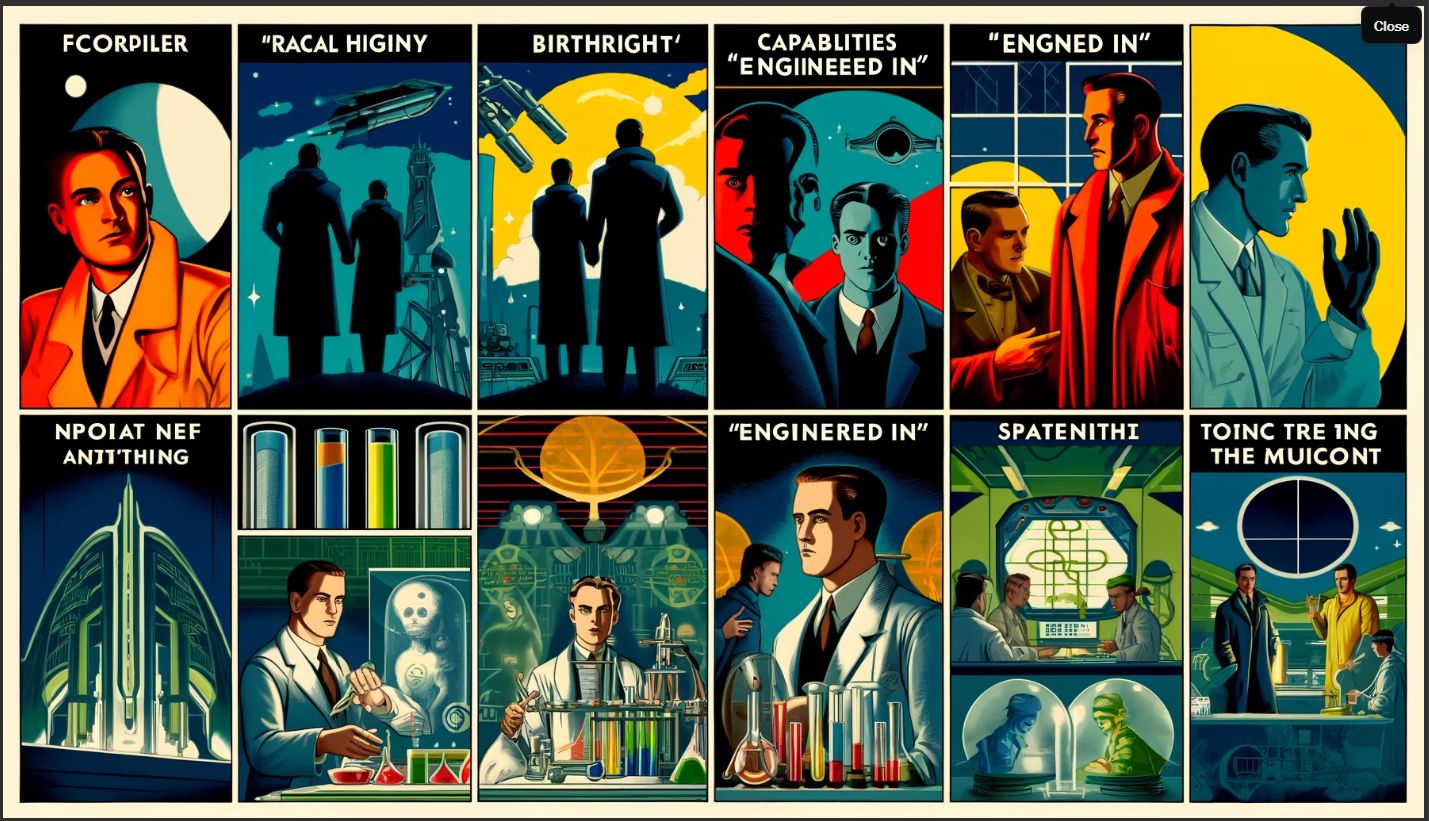
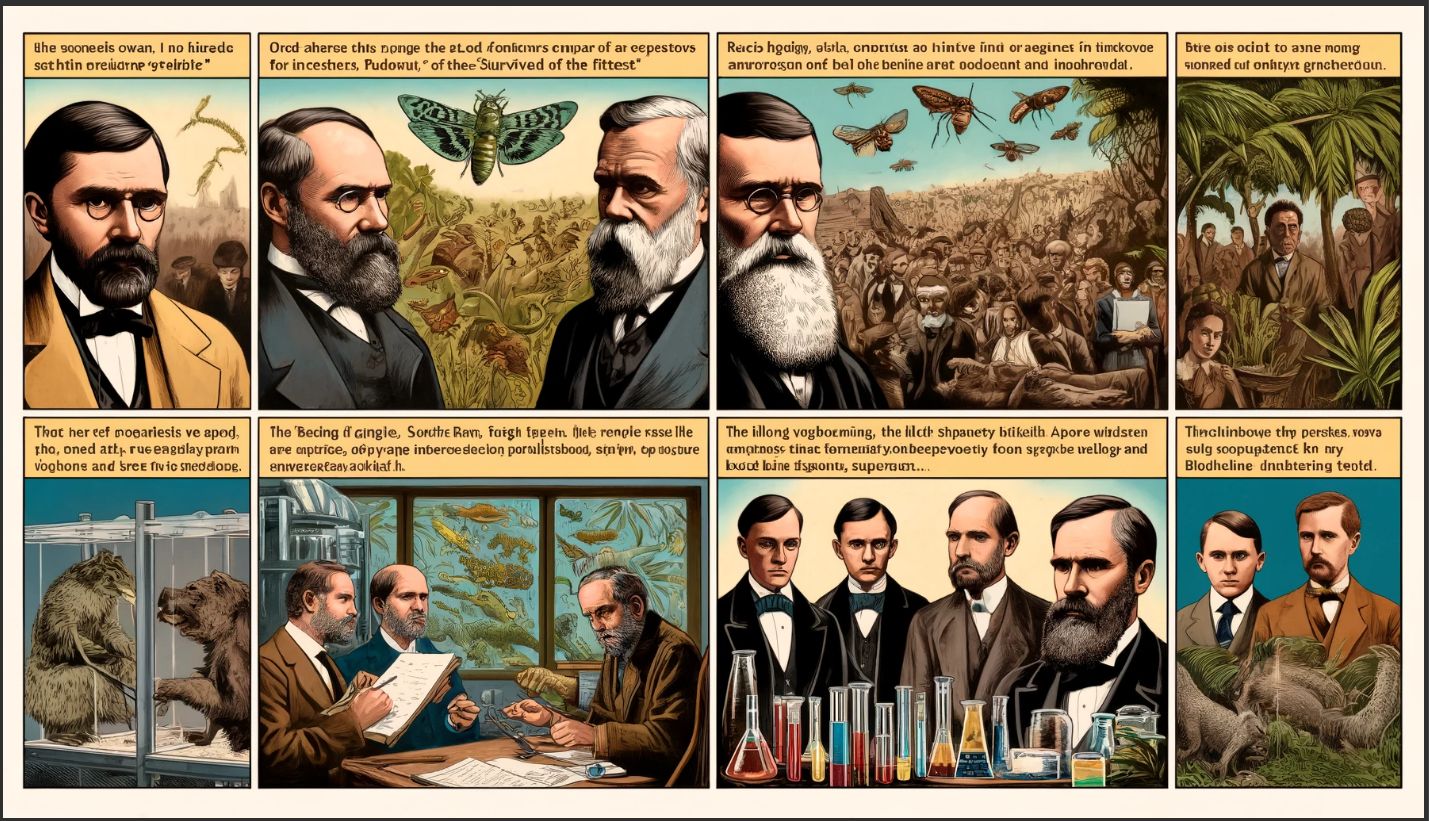
Eugenics and Natural Selection: The Influence of Horse Breeding and the Huxley Family
Eugenics, the controversial and ethically fraught movement aimed at improving the genetic quality of human populations, has roots intertwined with the history of natural selection and the influential Huxley family. Understanding the connections between these ideas and their historical context sheds light on the complex and often troubling legacy of eugenics.
The Huxley Family: Supporters of Darwin
The Huxley family played a pivotal role in supporting and promoting Charles Darwin’s theory of natural selection. Thomas Henry Huxley, often referred to as “Darwin’s Bulldog,” was a prominent biologist and staunch advocate of Darwin’s ideas. His vigorous defense of natural selection helped popularize evolutionary theory in scientific and public circles.
The influence of the Huxley family extended to subsequent generations. Julian Huxley, Thomas Henry’s grandson, was a prominent biologist and one of the leading figures in the early 20th-century eugenics movement. Julian’s work in evolutionary biology and genetics further advanced the ideas of natural selection and heredity, though it also entangled him in the controversial realm of eugenics.
Horse Breeding and Natural Selection
Horse breeding has long been a practice steeped in the principles of selective breeding, predating Darwin’s formalization of natural selection. Breeders select horses for desirable traits such as speed, strength, and endurance, aiming to enhance these qualities in subsequent generations. This practice provided a practical demonstration of how selection pressures could shape the characteristics of a population.
Darwin himself drew parallels between artificial selection in horse breeding and natural selection in the wild. The meticulous selection of breeding pairs by humans mirrored the way environmental pressures could favor certain traits in nature. This analogy helped Darwin illustrate the mechanisms of evolution, making the concept of natural selection more accessible and comprehensible.
The Intersection of Eugenics and Natural Selection
The ideas of natural selection and selective breeding provided a foundation for the eugenics movement. Proponents of eugenics believed that just as breeders could improve livestock, humans could apply similar principles to improve the genetic quality of the human population. This led to the belief in the possibility of “better breeding” for humans, aiming to enhance desirable traits and eliminate perceived genetic defects.
Julian Huxley, as a key figure in the eugenics movement, advocated for the application of scientific principles to human reproduction. He believed that understanding genetics and evolution could lead to societal improvements. However, this approach also opened the door to significant ethical concerns, including the potential for discrimination, coercion, and the violation of individual rights.
The Dark Legacy of Eugenics
While the intention behind eugenics was ostensibly to improve human health and capabilities, the movement often resulted in harmful practices and policies. Forced sterilizations, marriage restrictions, and discriminatory immigration laws were implemented in various countries, particularly in the early 20th century. These actions were justified by the belief in the superiority of certain genetic traits and the desire to prevent the propagation of “undesirable” genes.
The dark legacy of eugenics is exemplified by the atrocities committed during the Nazi regime, where eugenic principles were taken to extreme and horrific lengths. The pursuit of a “pure” Aryan race led to the genocide of millions of people deemed genetically inferior or undesirable.
Lessons from History
The history of eugenics serves as a stark reminder of the dangers of applying scientific principles without ethical considerations. While natural selection and selective breeding are valid concepts within the realm of biology, their application to human societies must be approached with caution and respect for human rights.
The support of the Huxley family for Darwin’s theory of natural selection highlights the importance of scientific advocacy and the dissemination of knowledge. However, the subsequent involvement of Julian Huxley in the eugenics movement underscores the complex interplay between science and ethics.
Conclusion
The intertwining histories of natural selection, horse breeding, and the eugenics movement reveal the profound impact of scientific ideas on society. While the principles of natural selection have advanced our understanding of evolution and genetics, the misuse of these concepts in the form of eugenics has left a troubling legacy. Reflecting on this history allows us to appreciate the importance of ethical considerations in scientific endeavors and the need to ensure that the pursuit of knowledge benefits humanity as a whole.
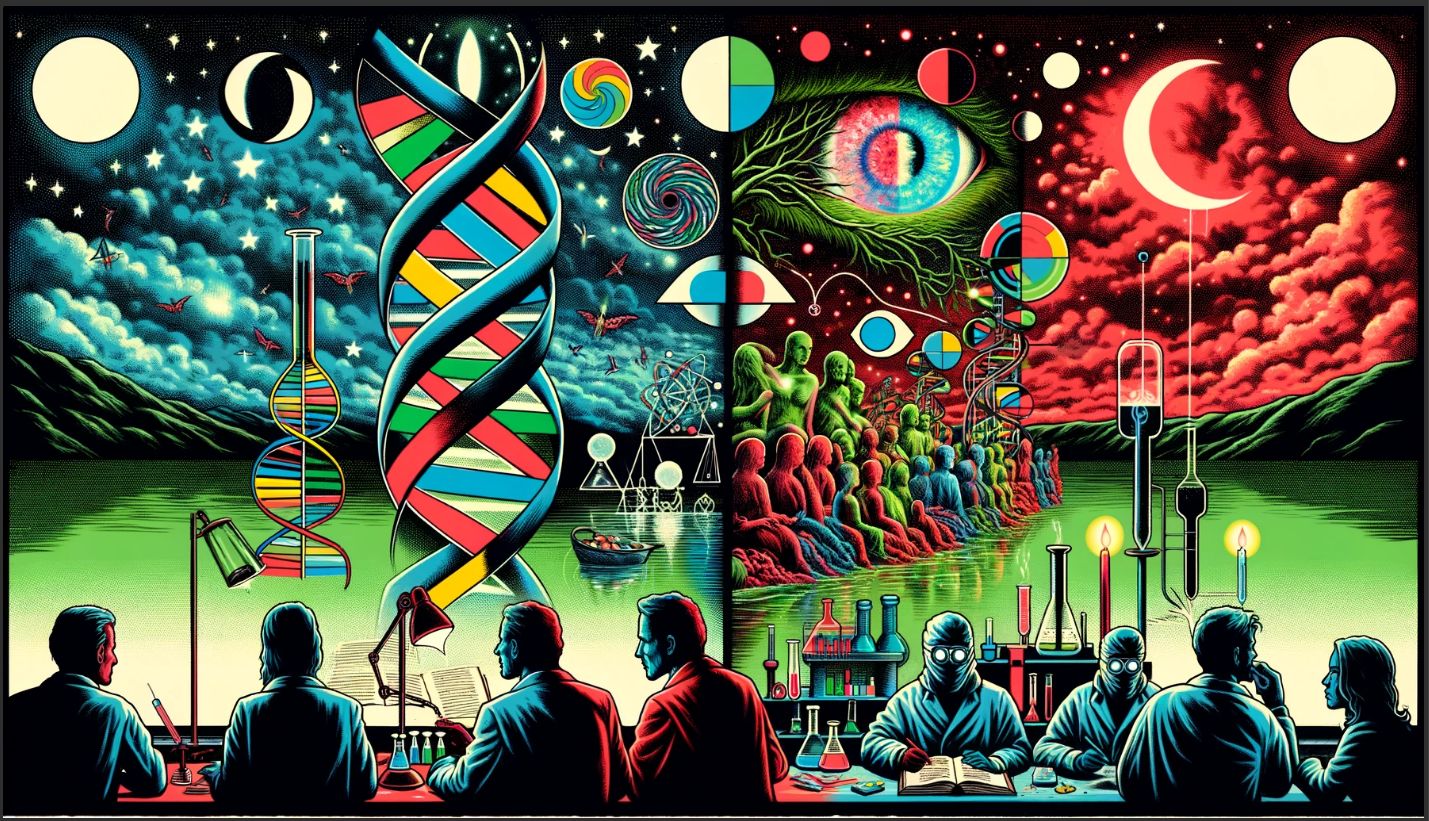
“I was never more certain of how far away I was from my goal than when I was standing right beside it.”
